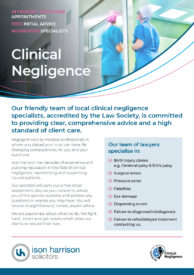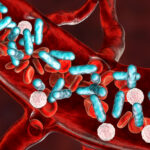Testicular Torsion Solicitors
A twisted testicle, more accurately described as testicular torsion is a painful experience but the effects can be long lasting if medical treatment is not administered as quickly as possible. If may be possible to make a medical negligence claim.
Testicular torsion is a relatively uncommon condition, occurring in 1 in 4,000 males under age 25. It can also occur in males of all ages, from newborn baby boys to senior men. Torsion usually happens on just one side, but in rare instances, it occurs in both testicles.
Testicular torsion is a medical emergency that occurs when the spermatic cord twists cutting off a testicle’s blood supply.
Common signs of torsion include:
- Sudden, strong pain in a testicle.
- Abdominal pain.
- Waking up with scrotum pain, (common in young boys).
- The pain may go away and then come back again.
- Swelling and redness.
- Feeling sick or throwing up.
- The testicle that hurts may be higher than the other.
- Frequent urination.
For most boys, talking seriously about their private parts can be a little embarrassing. But if you have a son, it’s important that he knows to tell you or a health care provider if he ever has genital pain, especially in his scrotum or testes.
Why is it a medical emergency?
Each testicle is connected to the rest of the body by a blood vessel called the spermatic cord. Testicular torsion happens when a spermatic cord becomes twisted, cutting off the flow of blood to the attached testicle.
Testicular torsion requires immediate surgery to save the testicle. Saving a testicle becomes more difficult the longer the spermatic cord stays twisted. The degree of twisting (whether it’s one entire revolution or several) determines how quickly the testicle will become damaged. As a general rule:
- within about 4-6 hours of the start of the torsion, the testicle can be saved 90% of the time
- after 12 hours, this drops to 50%
- after 24 hours, the testicle can be saved only 10% of the time
If testicular torsion is suspected it is important to call a doctor or get to a hospital as soon as you can. It is advisable to not eat or drink anything until you have seen a doctor and found out if you require surgery.
How is testicular torsion diagnosed and treated?
Testicular torsion is usually diagnosed on the basis of the history of symptoms and a physical examination. An ultrasound scan can also assist in making the diagnosis.
Surgery will be required to untwist the spermatic cord, and stitch the testicle to the inside of the scrotum to prevent future torsions. If the torsion goes on too long, then the testicle may be permanently damaged and it will need to be removed through a type of surgery called an orchiectomy. Replacement of the lost testis with a prosthetic can be considered.
Studies also show that males who have undergone a unilateral orchidectomy can experience a decrease in fertility potential.
How can we help?
If you believe there has been a delay or a failure to diagnose and treat testicular torsion and you or a family member have suffered as a result, you can contact a member of the Ison Harrison team for free advice on 0113 284 5000 or email clinneg@isonharrison.co.uk. If we believe that there are sufficient prospects to pursue a claim we will guide you through the process and ensure that you get the compensation you deserve.





































